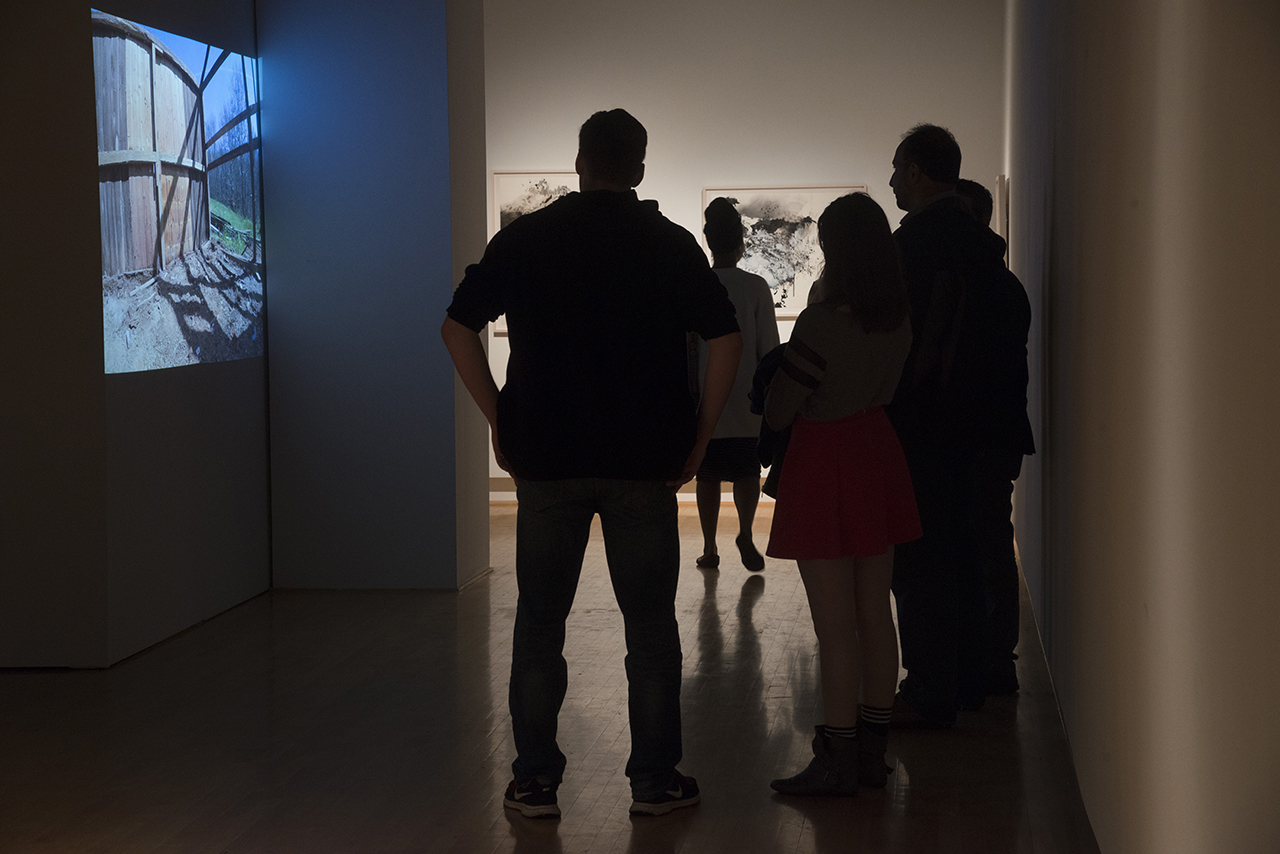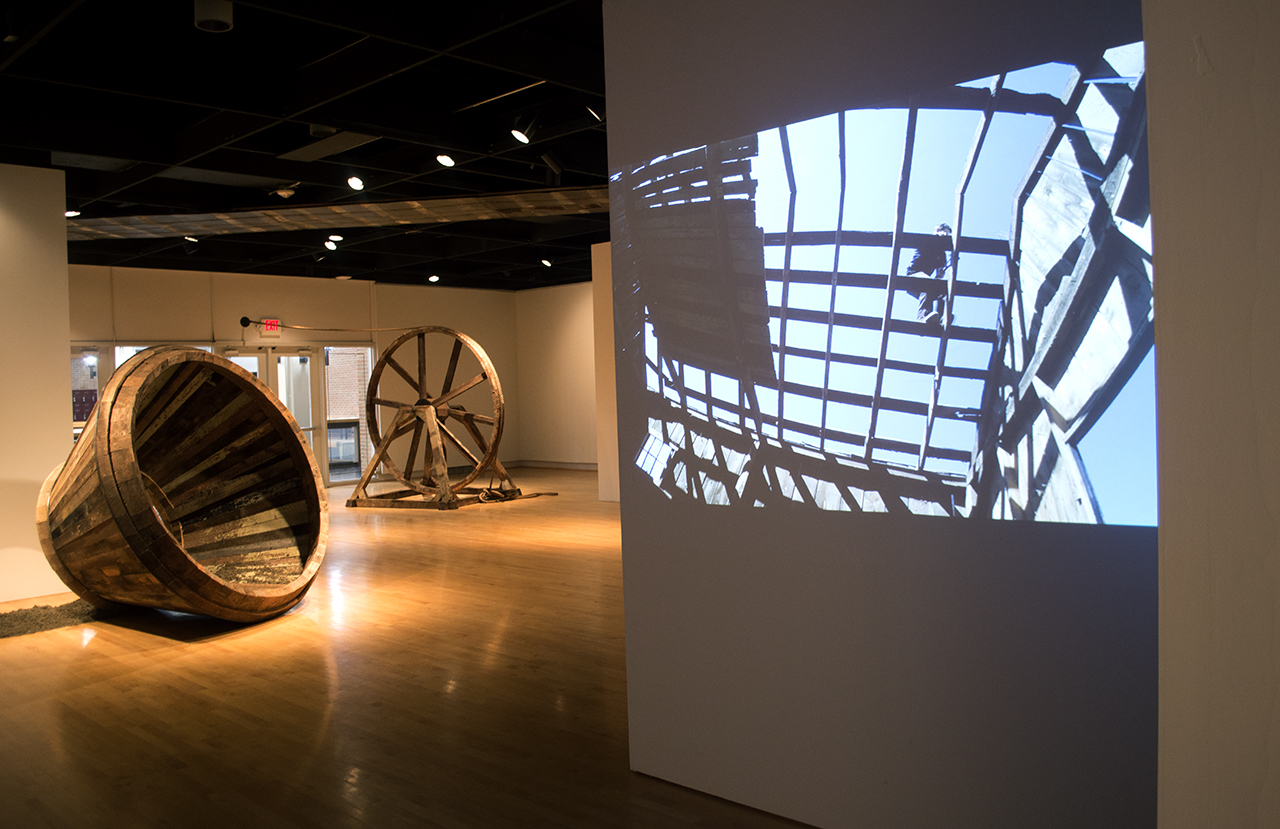Cartographer, 2016
Video and sound loop,
Dimensions variable
Cartographer is one of four sculptures from my 2016 MFA thesis exhibition titled 'Rural Decay Almanac' at the University of Maryland College Park Art Gallery. The following is an excerpt from my written thesis.
Cartographer is a 15 minute video loop archiving the one-day dismantle of the barn in Ijamesville. The sounds from the labor are projected into the gallery; hammering, prying, creaking, and scuffing. The projection is secluded from the objects and meant to be seen after experiencing the forms. As the viewer gets closer to the end of the space, the sounds of labor get louder, and lures their attention towards the projection screen. Rather than just a documentation or how-to, the video focuses in on specifics related to the site - how the light changed inside and out as the barn came down, the sounds that filled the surrounding area, and perspectival views that show the setting in different angles making for intriguing shots. It is not necessary that the audience makes the material connection between the objects they encountered, and the structure in the video, but rather that they approach the video as a stand-in for every barn like this across the American landscape. As the performer in the video, I take on the roll of a Cartographer of sorts, turning the barn into objects that map out future spaces.
The video loop starts out with a sound byte sampled from The Voyager Interstellar Record aboard the space probe Voyager 2. The Voyager 2 was launched in 1977 to study our solar system. It is the furthest man-made object away from our planet, and in 2012 it was 14.7 billion kilometers away travelling at approximately 35,000 miles per hour. The Voyager Interstellar Record is just one of many things aboard the ship to represent humans to any extraterrestrial life that it might find. The record is gold plated with 31 tracks ranging from love songs from Papua New Guinea, to Louis Armstrong and His Hot Seven. The record starts with this speech by Secretary General of the United Nations, Austrian Kurt Waldheim.
On top of the gold-plated record there is also an ultra pure sample of the isotope uranium-238, which has a half life of 4.468 billion years. This makes it possible for any civilization who may find it within this time to be able to tell the age of the record by using the ratio of the remaining uranium in comparison to other elements.


